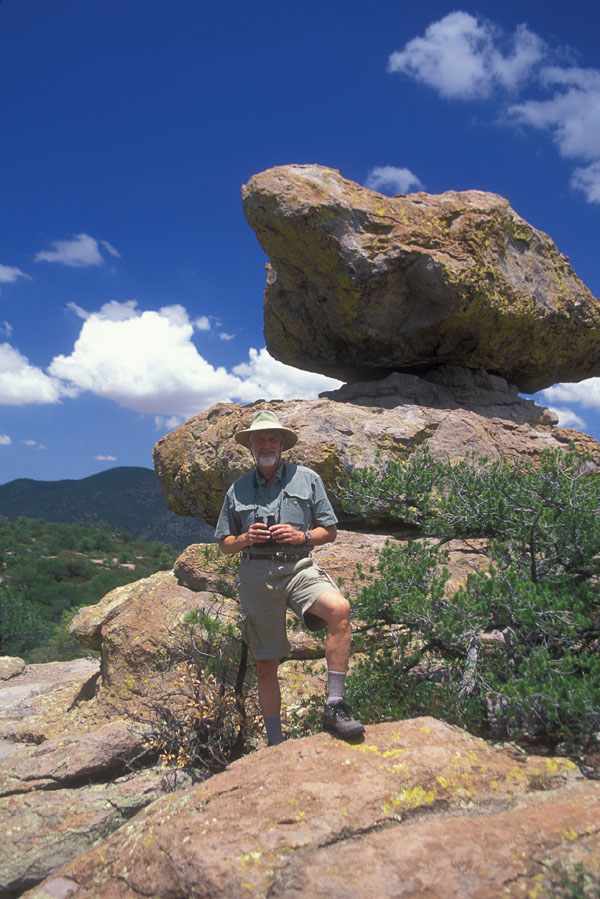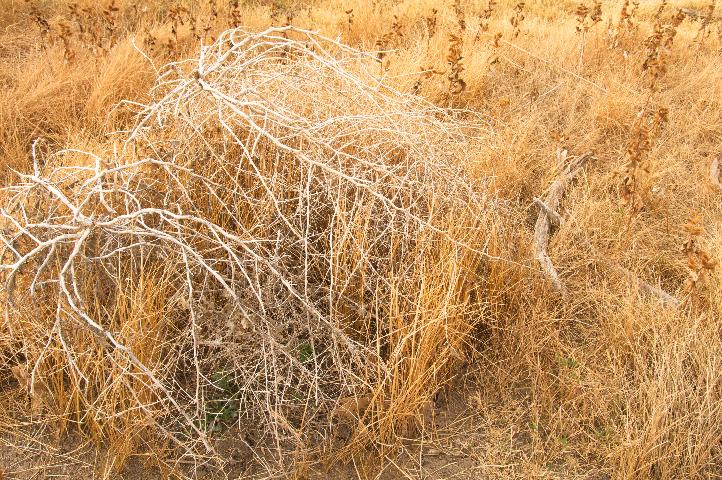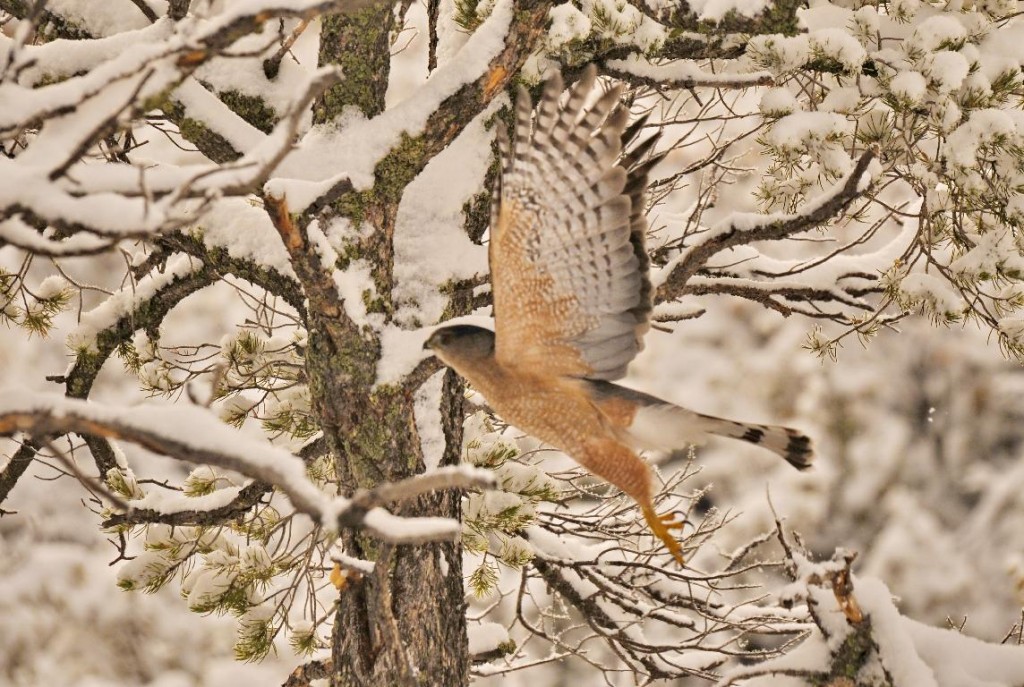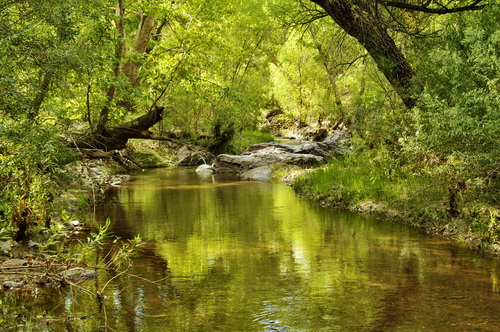You get what you pay for, they say. Today I collected a fortune, with interest, because I paid attention. Continue reading
Tag Archives: ecology
Landscape Lunacy: Chaparral on Fire
29 June 2013. Prescott, Arizona. At Granite Mountain, eleven days after the eruption of the big Doce Fire, the smoke has cleared—mostly. There are still hot pockets (inedible ones) with potential for flames to rise from the ashes and run amok again. Mother Nature teases us with clouds trailing virga—and even a few drops of liquid that reach the ground—but the hot winds accompanying the clouds continue their mischief, and dry lightning ignites new blazes around the county. A microburst (sorry, not an artisan brew) takes down trees in town and starts a fire. The firefighters are still out there at the mountain, and aircraft drone overhead on their missions of attempted control. But for most of us, the adrenalin has subsided; our fears have receded.
30 June 2013. One of those fires started two days ago happened to be in Yarnell, and today it erupted into the disastrous fire that took the lives of 19 members of the Granite Mountain Hotshots, the same folks who fought the Doce Fire and, in the process, saved the sacred ancient juniper that may have watched the comings and goings of wildfire for millennia. I was photographing the aftermath of the Doce Fire when I saw the terrible black cloud rising to the south, so I raced down there and watched from a safe distance as the flames engaged in the chaotic dance of pyrotechnics triggered by an advancing monsoonal cell. I heard and saw the screaming influx of ambulances and feared for the worst—but it was even worse than my greatest fears.
Two major local disasters by fire in Yavapai County within two weeks. Sorrow and grieving for beloved Granite Mountain (clearly personified in the emotions of many) and the brave firefighters dominate discussion.
28 July 2013. Now a month later, our wounds healing with time, we can look at the context of these fires with a bit more rationality—or at least we should. “Don’t mess with Mother Nature” is a common phrase, and it exemplifies our tacit willingness to shift responsibility to a perceived natural deity rather than accepting an obligation to live our lives as informed citizens of Planet Earth. Continue reading
In Defense of Tumbleweeds
Drifting along, like a tumbling tumbleweed. That catchy tune warbled by the Sons of the Pioneers somehow epitomizes nostalgia for the Old West. Never mind that the tumbleweed is a carpetbagger, an interloper, an émigré otherwise known as Russian thistle. I’ve heard tell that the Russkies sent it here as a kind of biological weapon, a plague on our plains, a prickly infestation designed to lay waste to our grasslands, to overwhelm us with its ability to take any of our attacks against it and come back stronger than ever. Where is the real truth here? Continue reading
Aerial Assassin
Dining has its dangers. And I don’t mean indigestion or choking on a bone. I’m talking hazards for the local seed-eating birds—the doves, quail, sparrows, juncos, and finches that check out the seeds that I scatter on the ground each morning.
Winter’s icy chill has descended on this part of Arizona, and recent snow has frozen into a crunchy crust. Little soil is exposed, and even the shrubs continue to bear heavy blobs of snow. These are lean times for seed-eating birds; there is no dietary margin for error. Find enough to eat or die. Continue reading
Borderlands Musings
BORDERLANDS MUSINGS
By Walt Anderson
Four decades ago, I was a grad student in the School of Natural Resources at the University of Arizona in Tucson. Well before Arizona gained its strong reputation as a hotspot for American birding, there was a small community of birders who sought out the neotropical specialties that crossed the border and the eastern vagrants that popped up now and then in desert oases. There were seasoned experts like Gale Monson, whose knowledge of Southwest birds was encyclopedic, and ragtag graduate students like Carroll Littlefield, an expert on Sandhill Cranes, and Ted Parker, later considered by many as the superstar of birders and field ornithologists. There was none of the competitive, obsessive listing that later infected the birding world, a narrow-minded focus on seeing and ticking off species as fast as possible, the interest in each bird satisfied by a mere checkmark. No, these were naturalist birders, keen observers who sought to learn about the entire ecosystems in which birds were a part. Where a bird nested, what it ate, how it migrated or molted—such were the questions that occupied the curiosities of this generation of field biologists.
Whenever possible, we would load up a tank of gas at twenty-some cents per gallon and take off to one of our favorite oases, ostensibly to bird, but even more so to explore wild places and experience the joys of discovery in nature. Often our paths took us through the dusty border town of Douglas, Arizona under the appalling smokestacks of Phelps Dodge, then likely the largest single point-source of pollution in the Southwest, if not America as a whole. Continuing east along teeth-chattering gravel roads, we passed through the “malpai” badlands of rocky hills, creosote bush, ocotillo, and occasional flash-flood-prone desert washes. We’d pass the old ranch of Texas John Slaughter, where we’d stop to glass for whistling ducks, Neotropic Cormorants, Vermilion Flycatchers, and other oasis birds drawn to the artesian springs there (later much of this became the San Bernardino National Wildlife Refuge established primarily to help save native fishes of the Rio Yaqui watershed).
Our final destination lay at the end of the road just into New Mexico right where that state intersects with Arizona and Sonora: a green finger of Mexican riparian woodland, Guadalupe Canyon. We would stop up at the Magoffin ranch house to pay our respects and get their generous permission; then we’d explore the main canyon of large cottonwoods and sycamores and venture up thorny side washes for arid-adapted specialties. At night, we would listen and watch for the Ridgeway’s Whip-poor-will (now called Buff-collared Nightjar), one of the species that barely entered the United States at this point.
We were certainly aware of the proximity of Mexico, but only because we could count birds seen on this side of the weak barbed-wire fence for our U.S. list. At night as we lay in sleeping bags under the canopy of trees and the overarching dome of stars in an unpolluted sky, we might awaken to the footsteps and breathing of men, usually alone or with one companion, heading north to work, seeking employment opportunities that were unavailable south of the border. We might meet them at dusk or in early morning, where a polite exchange of “Buenos Dias” or “Hola” along with shy smiles would be the extent of our interchange. Continue reading
I am a Naturalist
It’s perfectly natural to jump to conclusions when you see that title. No, I do not run around outdoors in the buff (that’s “naturist”). If that disappoints you, then head off to some other blog. I may at times strip away pretensions and speak the naked truth, but that’s as far as it can go here. Well, since evolution’s bottom line is differential reproduction, much of life really is about sex, so I may not be able to resist some titillating tidbits of nature in the raw. Far more worrisome, perhaps, is the fact that I adore word play, so brace yourself for occasional verbal twists and turns, some times subtle enough that only the sophisticated will appreciate it and sometimes downright blatant and silly. Without levity, we are left with gravity, and that’s a downer, for sure. Continue reading
times subtle enough that only the sophisticated will appreciate it and sometimes downright blatant and silly. Without levity, we are left with gravity, and that’s a downer, for sure. Continue reading



